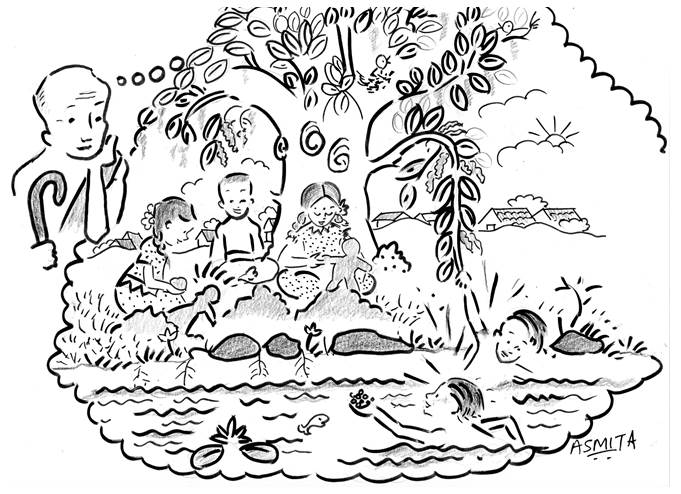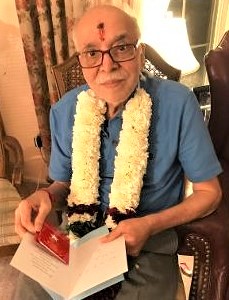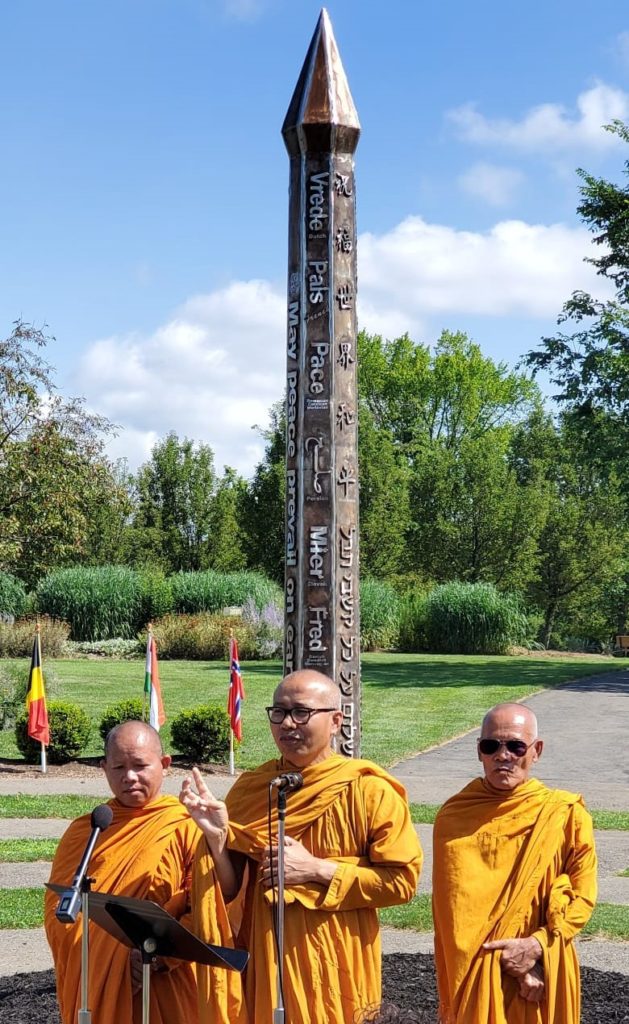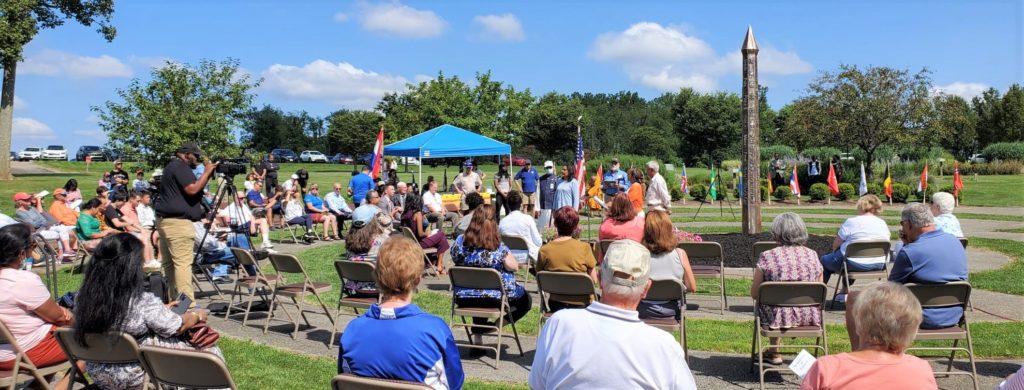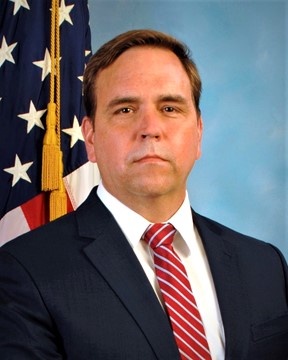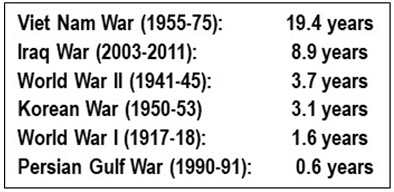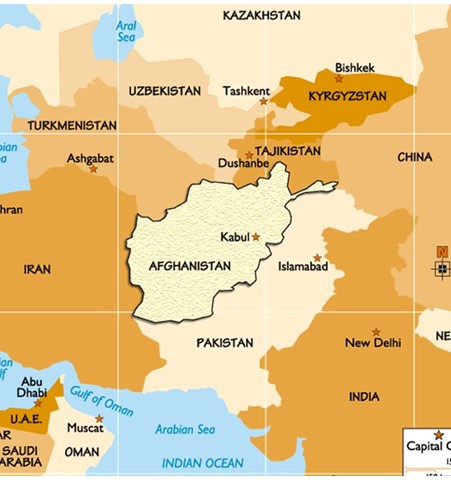Archive for category October 2021
Did You Know We Have A Second Fully Functioning Civil Airport in Pittsburgh?
Posted by admin in October 2021, Past issues on October 4, 2021
Did you know that we have a fully functioning airport on 24x7x365 basis — it even has its own airport code AGC — in West Mifflin, an eastern suburb?
Did you know that till 1954 when PIT came into being, AGC, built in 1931, was the commercial airport for our region’s burgeoning travel needs with the growth of the steel industry?
Did you know that ACG was one of the first three airports in the nation, and also the first airport with hard-surface runways?
I too didn’t know these facts till I attended the 90th anniversary of the airport in September. This is one reason why we all should take an interest in our region’s rich history and what is happening around us right here.

After completing a $2.5 million project refurbishing the airport’s passenger facilities, on Saturday, September 25, organizers celebrated the 90th year of the airport. Elected officials and the people who run the airport addressed a gathering on the highlights of the airport.
County Chief Executive Rich Fitzgerald in his brief address informed the audience that the airport brings over $2 billion in business to the region with over 60,000 arrivals and departures annually — mostly charter flights and privately owned planes. The airport also serves other functions, such as medical emergencies, disaster emergencies, and also for training for new pilots.
The Civil Air Patrol (CAP) also operates from this facility. CAP, the official US Air Force auxiliary, is a nonprofit organization tasked by the US Air Force to help in inland search-and-rescue operations and assist in other security-related activities.
A more detailed story on these will be in the next issue. — END
कन्यादानं in Vedic Weddings — Receiving the Bride is As Important
Posted by admin in October 2021, Past issues on October 4, 2021
In Vedic and Christian weddings all over the world, the giving away of the bride is an poignant, emotional part of the ceremony. While the details vary widely, the tradition of the father handing over his daughter to the groom is common in both. I am sure, some anthropologist somewhere has studied how this ritual is common in both cultures even though separated by thousands of miles, and irreconcilably differing in theology — salvation (Christians) vs. liberation (Hindus); obedience & sin (Christians) vs. karma & avidya (Hindus).
In August, I attended a cross-cultural Hindu Vedic wedding on the West Coast. Shri Sashidhara Somayaji (contact number 408 800 5444), one of the pandits conducting the wedding, said this in facile English before kanyaadaanam, widely understood as the parents of the bride giving away their daughter: “We understand कन्यादानं (kanyaadaanam) by splitting the phrase using Sanskrit Sandhi rules into कन्या + दानं with कन्या (kanya) meaning bride; and दानं (daanam) contextually meaning “gift.â” Incidentally, Pandit Somayaji, who is from Udupi in Karnataka, is facile in Kannada, Telugu, Tamil, Malayalam, Tulu, Hindi, Sanskrit and English.
He continued: “Understanding कन्यादानं exclusively as parents giving away their daughter is incomplete. Following Sanskrit’a sandhi rules, कन्यादानं also splits into कन्या + आदानं (aadaanam). आदानं (aadaanam) means receipt or receiving. So, कन्यादानं should be correctly understood with emphasis on both parents giving their daughter away and the groom accepting her in the ceremony.” After all, when someone gives, someone else has to receive. Without some one to receive, the “gifting” part has no meaning.
The आदानं part gives an entirely different flavor to the ceremony with the obligation on the groom to live compatibly with his new bride, with the implied responsibility on the bride also in their journey together. — END
Human Instincts to Display One’s Prowess
Posted by admin in October 2021, Past issues on October 4, 2021
From Olympics to college and school sports, we see the natural instincts of youth to compete with each other and display their prowess to an admiring audience. It is an absolute delight to see six- and seven-year-olds running on soccer fields screaming and chasing after each other to snatch the ball and move it towards their opponents’ goal post. This instinct to display physical skills is not only in competitive sports, but also in simple family gatherings, as I found out recently.
We were in California in August for a family wedding, when our daughters also added a few vacation days for us and our grandkids to stay in a rented place. The place had an indoor pool with an 8′ deep diving end. Our nine-year-old grandson, barely 4′ tall, knows swimming and was trying to learn diving from his dad. After a few trials and some serious struggle, he did get the hang of how to dive deep into the pool.
No sooner had he got the hang of it than he wanted to show his prowess to his grandfather, who, growing up in India in the 1960s, was a stereotypical urban kid, not even SEEING a swimming pool. My grandson told me, “Thatha, toss a coin at the deep end. I will dive and get it for you.†I was nervous, not knowing whether he had the lung capacity to dive deep in the pool, search for the coin, reach the bottom, pick it up and come out. He pestered me. I looked at his father, and he said, “Go ahead.”
With hesitation, I tossed a quarter into the deep end of the pool. The kid dived confidently into the deep end, looking for the coin. Then, picking up the coin, and with a great sense of accomplishment, he soared out of the pool like a dolphin with a beaming smile, showing me the coin in his hand. He asked me to do this again and again.
Seeing my grandson trying to impress me with his aquatic skills, I recalled an old Tamil poem I had read decades ago. This poem is in the 2000-plus year-old Tamil classic Puranaanooru.
Puranaanooru is an anthology in the Tamil literature, written by both men and women poets 1800 to 2200 years before our time. The 398 verses are in classical Tamil with very few Sanskrit words interwoven, indicating that Tamil’s history is parallel to Sanskrit’s.
The Puranaanooru verses describe the valor, pride, pettiness, generosity, and even philandering of kings; admonish them to be loyal to their wives; advise kings not to let bureaucrats harass citizens; describe the grinding poverty of citizens during wars, thus trying to dissuade kings from going to adventurous wars.
But the poem I recalled is quite different. In this, the poet, Todittalai Vizhuttandinaar, in his very old age, recalls with vivid imagery the innocent days of his youth long gone, very much like my own. He describes the prowess he and his buddies showed in their swimming skills to the admiring onlookers on the banks of a large, deep village pond after the rains. The sentiment the poet expresses is universal transcending time, place, and culture that separate humanity into distinct linguistic, religious, and cultural groups. Here is a free style English translation of the verse:
It feels sad to think about it now.
On the sandy edges of the pond with cool water,
we played with girls who made dolls with the clayey soil,
decorating them with flowers plucked from trees nearby.
Holding hands in the innocence of youth,
we hugged each other, swaying this way and that.
Climbing the Marutha (Arjuna) tree on the bank
with its branches sagging towards the pond,
we dived into the deep pond with a thud and a splash.
Reaching the bottom, we returned showing to the
amazed onlookers on the shore the fistful of sand
we grabbed from the pond’s floor.
Where did that innocent youth go?
Isn’t it pitiful that having become old now, tremblingly
I walk holding a metal-capped stick while coughing,
barely uttering a few words in between?
Sitting on the poolside in balmy California, I was amused to see similarities between my nine-year-old grandson trying to impress me with his aquatic skills and what Todittalai Vizhuttandinaar, the senile Tamil poet, recalled in a 2000-year-old poem on his youth long gone. The Tamil poem in Puranaanooru in its original is available here: www.tinyurl.com/Puranaanooru-Swimming — END
Obituary: Vijay Kapoor (1937 to August 21, 2021) — A Well-Liked Long-Time Resident & Music Lover
Posted by admin in October 2021, Past issues on October 4, 2021
By Shambhavi Desai, Bridgeville, PA
Vijay Kapoor of Mt. Lebanon, Pennsylvania, a long-time resident in our area, well-known and well-liked by all who interacted with him, passed away in his sleep at St. Clair Hospital on August 21, 2021. He was 84.
He was born on April 28, 1937, in Hyderabad, India, to Shadi Ram and Krishen Kaur Kapur, as the youngest of nine siblings. He got his bachelor’s degree in arts. In 1975, Mr. Kapoor came to the U.S. with his two children and lived with his older sister, Shakuntala Prabhu, with whom he was very close. His wife, Sulochana, joined him later. Before coming to the United States, he was in the Indian military, lived in Zambia, and Ottawa where he worked for the Indian High Commission. He was with Allstate Insurance since 1977, till he retired in 2009.
Many in Pittsburgh knew Vijay Kapoor as a soft-spoken gentleman with a polite disposition. His passion was music, a trait he got from his mother and brother. He told me in an interview years back, “I listened to Bengali and Hindi songs on the radio growing up.†An ardent fan of legendary singers like Pankaj Mullick and Hemant Kumar, he sang Hindi and Bengali songs at community gatherings in his melodious voice. He was facile in Telugu and Urdu as well. Mr. Kapoor was with the Bengali Association of Pittsburgh. He chuckled and told me once, “I am a Bengali soul in a Punjabi body!â€
Kapoor had a large personal collection of Indian gramophone records from the 1930s, 40s and 50s, well-kept and cataloged in his basement where he spent his time in retirement, lost in his world of music. Some of his music collections are on this link: www.tinyurl.com/Kapoor-Music-Albums.
He is survived by his wife of 56 years, Sulochana; his children, two sons (Hemanth Kapoor and Vikram Kapoor; and daughter Krishna Kapoor Johnston) and their spouses; and his grandchildren.
Vijay Kapoor’s Hindu cremation was at the Beinhauer Funeral Home with Pandit Sureshchandra Joshi from the Hindu-Jain Temple helping the Kapoor family with the last rites.
A grateful note from the editor: Vijay Kapoor (and his son Hemanth) supported the magazine with ads in its early crucial days, the ads that they perhaps did not need for their business, just to help the magazine survive. — Kollengode S Venkataraman — END
Monroeville’s Peace Pole Installation Ceremony
Posted by admin in October 2021, Past issues on October 4, 2021
By Praveen and Pratheema Kumar, Monroeville, PA
Note: Praveen, with his background in computer science, is pursuing his PhD program in machine learning while working in the same field. His passion are sports car and coffee. Pratheema, an electrical engineer, works for a semiconductor company. She loves cooking, baking and dancing. She has learned Bharatanatyam. They live in Monroeville.
If anyone wanted to have an outdoor event in our area, July 31st, 2021 was the day — azure sky with patches of white clouds slowly drifting, temperatures in the 70s and gentle breeze. The Rotary Club of Monroeville could not have chosen a better day for dedicating their Peace Pole, reminding us of the importance of peace in this world! Around 150 people from diverse backgrounds joined in the celebrations.
Peace Poles, fabricated with different materials, are internationally recognized symbols of the hopes and dreams of humanity, standing vigil in silent prayer for peace on earth.
In the wake of the Second World War, Masahisa Goi of Japan 1955 in Japan, came up with the idea of installing Peace Poles. The first few Peace Poles outside Japan came in 1983. Since then, more than 250,000 Peace Poles are in over 190 countries. The central theme in the monument is the message “May Peace Prevail on Earth.â€
Rich Fitzgerald, County Executive of Allegheny County, was the special guest for the event. Mr. Fitzgerald said Pittsburgh is a city that is very diverse and has been welcoming people of all backgrounds and nationalities for several decades and will continue to do so in the future. Moments like these give us time to pause, he said, to reflect and respect the journey we have come through as a country, and events like these make us think forward on ways to strengthen our cultural diversities even more by respecting everyone and treating everyone equally.
Earlier, Brandon Markosek, the Democratic State Representative in Harrisburg (from District 25 covering Monroeville) stressed that it is paramount that we all come together as one, we treat everyone fairly and equally and for all to feel part of the community. The Peace Pole, Markosek declared, “conveys the fact that we are one country, and we are one people.â€
Setting the stage for the event, earlier, the president of Monroeville’s Rotary Club, Gerry Maynard, welcomed the invited guests and the gathering. He highlighted the significance of installing a Peace Pole as a symbol for welcoming and nurturing diverse cultures among people of different national origins, ethnicity, and religions. He exhorted everyone in the audience to extend diversity, equality, and inclusion in simple everyday tasks by making them a priority.
SOm Sharma, the previous president of the club, detailed the tremendous efforts that went into the Peace Pole project. Peace, he said, is at the very top of Rotary’s Seven Areas of Focus, and that Rotary’s motto, namely, “Service above Self†continues to motivate fellow Rotarians all over the globe. Hundreds of thousands of Rotarians in more than 35,000 clubs worldwide continue to spread peace around the world.
There are plans to add “Hiroshima Trees,†to send a strong message of human resilience. The Hiroshima trees survived the US dropping of the nuclear bomb in Hiroshima in Japan in August in 1945. The Peace Pole will only be a beginning inspiration for all to create programs nurturing peace and harmony in the community.
The Monroeville Rotary Club, a year ago, decided to have a Peace Pole in the community. A team of enthusiastic Rotarians did their research and engaged the services of a reputed sculptor, Joel Selmeier, of Cincinnati, Ohio. The Rotarians also identified the different languages spoken in and around Monroeville, an astounding number of forty languages to be cast on the pole. Stainless steel was the choice of the material – we are after all, the Steel City — based on our location, weather patterns and durability (expected life span of 400 years). The $15,000 project, funded mostly by the club’s own funds, took ten months to complete.
Through the program, Mr. Maynard randomly picked one of the 40 languages and invited people from the audience who could speak that language. He asked them to translate the phrase “May Peace Prevail on Earth,†and the phrase was translated into Hindi, Punjabi, Japanese, Hebrew, Urdu, Thai, French and Bahasa (Indonesia).
The event ended with a closing song “Let There be Peace on Earth†by Diane Milowicki while the audience stood up and joined Diane in the singing, followed by the release of seven doves symbolizing the seven continents.
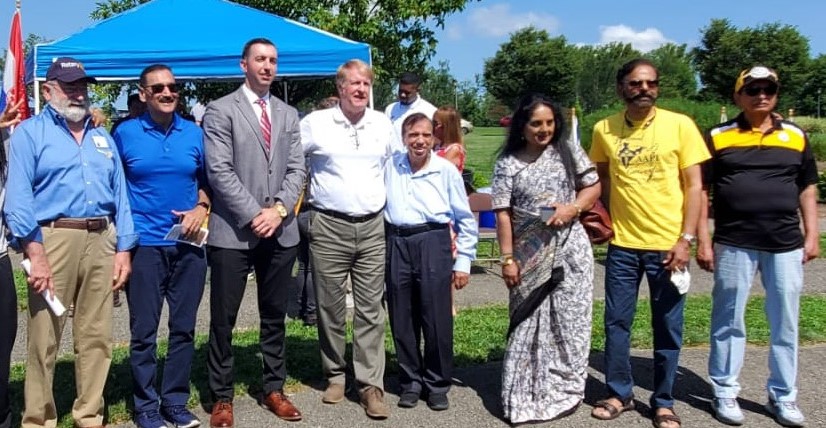
It was a great event, where people of different cultures, color and ethnic backgrounds were present unitedly to show their support to the “Peace Pole Inauguration Ceremonyâ€.
Suzan DeLaney, member of the Murrysville Rotary Club emceed the program, with Diane Milowicki giving the national anthem in the ceremony. — END
Hate Crimes Inflict Fear Among Citizens’ Help FBI to Stop Them
Posted by admin in October 2021, Past issues on October 4, 2021
By Mike Nordwall, Special Agent in Charge
FBI Pittsburgh Field Office, Pittsburgh,
The number of people reporting they’ve been a victim of a hate crime in Pennsylvania nearly doubled between 2019 and 2020 according to the FBI’s annual hate crime statistics report. That;s why the FBI Pittsburgh Field Office is engaged in a multifaceted statewide effort to build public awareness of hate crimes and encourage reporting to law enforcement.
The FBI is the lead investigative agency for criminal violations of federal civil rights statutes. Hate crimes, defined as a traditional offense with an added element of bias, are the highest priority of the FBI’s civil rights program because of the devastating impact they have on families and communities. The Bureau investigates hundreds of these cases every year, but hate crimes are often underreported to both federal and local law enforcement
At the FBI, we are very concerned about the lack of reporting when it comes to hate crimes. We want the community to know we are here for them. This campaign is a way to enhance collaboration between the FBI and our local and state partners, not just in law enforcement, but with the many community groups who work and see victims on a daily basis that are too scared to report the crime. The more information we can get from the community, the more trust each side will earn, and we’ll all be better able to attack the problem head on.
Hate crimes are not only an attack on the victim, they threaten and intimidate an entire community. The FBI works closely with state, local, and tribal authorities on investigations, even when federal charges are not brought. FBI resources, forensic expertise and experience in identification and proof of hate-based motivations often provide an invaluable complement to local law enforcement hate crime cases.
If you believe you have been the target or victim of a hate crime or other civil rights violation, contact the FBI at 1-800-CALL-FBI (225-5324) or the FBI Pittsburgh at (412) 432-4000 or submit a tip online at https://tips.fbi.gov. Tips can remain anonymous and can be made in an individual’s native language. — END
The War Many Almost Forgot, Finally Ends!
Posted by admin in October 2021, Past issues on October 4, 2021
I was in the Bay Area for a wedding in mid-August when President Biden announced that on August 31, the last American soldier would be leaving from what he aptly called the “Forever War†in Afghanistan costing $2.2 trillion and lasting 20 years. Most of the money was spent on the military, with $85 billion for training Afghanistan’s military. Here are the war’s mortality numbers (www.tinyurl.com/AfghanWar-HumanCost):
US service members through April 2021: 2,400.
Contractors employed by the US: 3,800.
Afghan national military and police: 66,000.
From NATO and other allied service member states: 1,150.
Afghan civilians: 47,200.
Taliban and other opposition fighters: 51,200.
Aid workers: 440.
Journalists: 70.
The Afghan War is the longest in US history. See the adjacent table. The way the war ended was bizarre. The US handed the country back to the Taliban, which it had overthrown twenty years ago. Many in the Taliban team with which the US negotiated in Doha — and in the new Taliban government now — were incarcerated in the Guantanamo prison for the ghastly 9-11 attack on the Twin Towers in New York. The US image as the Sole Superpower and its credibility among allies has been eroded.
The US-trained Afghan army vanished at astonishing speed and its weak president Ashraf Ghani fled the country. There is irony in Ghani’s pedigree: bachelor’s degree from the American University, Beirut; PhD from Columbia; taught at Berkeley & Johns Hopkins; worked at the World Bank and coauthored a book, ironically titled, “Fixing Failed States.â€
It was my nostalgia trip to the Bay Area, where I lived for four years in the 1980s. We revisited the touristy Redwood Forest and the Berkeley campus. In the 60s and 70s, the Berkeley campus of the University of California was notorious for student protests on issues considered taboos in the US mainstream.
So, with the US announcing our withdrawal from Afghanistan after the longest, costliest war, I expected some public demonstration of relief, if not celebrations, on the war ending. But all I saw was total nonchalance — even on Berkeley’s notorious Telegraph Avenue, where, decades ago, the most radical social outcasts gathered for all radical causes. People were going about their business in coffee shops, campuses, and public squares as if it was somebody else’s war somewhere faraway. In the campus where “Question Authority†was emblazoned on many T-shirts decades ago, a teenager was wearing a jacket with “OBEY†printed on it. While I was wondering how much the place has changed, my daughters told me OBEY is a brand name for a line of fashion apparel.
While editorial and opinion writers are telling us in bits and pieces how the Afghan war ended in defeat and retreat, here are my peripheral observations, as a tax-paying citizen:
• The Vietnam war (costing ~$170 billion in the 1970s, or ~$1 trillion in today’s dollars) was funded by increases in personal and corporate taxes and through bonds. That is, the citizens of that era bore the cost of the war. But the $2.2 trillion Afghanistan war was funded entirely through long-term public debt. It is estimated (www.tinyurl.com/AfghanWar-Interest-on-Debt) that by 2050, the interest on the debt will be over $6 trillion. For the next 30 years, people who had no say on the war — our children and grandchildren — will be paying for the war as deferred payment. For the Sole Superpower republic to go to war on borrowed money, expecting our children and grandchildren to redeem the debt is irresponsible, to say the least.
• Only 1% of the nation’s young and able-bodied went to the war in Afghanistan. This is because of the all-volunteer forces that the US boasts of. As the war dragged on for twenty long years, these voluntarily enlisted men and women ended up going to Afghanistan on multiple tours of combat duty. The psychological toll this took on these men and woman — not to speak of their spouses, parents, and children — is incalculable.
• With most of the 900,000-stong US forces serving multiple times in the war, over 21,000 were wounded. Taking care of these war veterans (many in their 20s and 30s now) for the next several decades will cost the federal government another $5 trillion, by one estimate. So, our children who are already harsh towards us, their baby-boomer parents, for bankrupting Social Security and Medicare, are burdened with an additional $11 trillion ($6 trillion as interest on debt and $5 trillion for the Afghan war veterans).
• The all-volunteer army was the result of the Vietnam war, which the US fought — and lost — with compulsory military service (called the draft) from all able-bodied youngsters from all socioeconomic backgrounds. There was widespread opposition to the war from middle class families and above in campus protests across the nation in the 1960s and 70s, as part of the Counterculture Movement. Many from rich or influential, or powerful families dodged the draft using a variety of legal maneuvers that many middle- and working-class youngsters were not even aware of. Among those who dodged going to fight the communists in Vietnam are Presidents Bill Clinton, George W. Bush, and Donald Trump.
Many draftees did not know what they were fighting for, and some were even opposed to the war. The one-year tour of duty for the draftees in far-off tropical jungles twelve time zones away sapped the morale of the army, so critical for invading militaries.

This is how the US or any other Big Powers look at their Foreign Policy options.
In the mid-1980s, in PBS’s 13-part-series Vietnam: A Television History, Gen. Nguyen Giap, the mastermind of the North Vietnam army, said this about the US fighting with unwilling draftees: While we waged one 20-year war, you waged 20 one-year wars.
The draft was one military factor among other non-military ones for the loss in Vietnam. So, the US military ended the draft and opted for an all-volunteer military. Forty-five years later, even with the all-volunteer army, the US still lost in this 20-year long Afghan war.
• Both GOP and Democratic presidents, the US Congress, the US Defense Department and intelligence agencies all have contributed by omissions and commissions to the way this war dragged on. Since every government institution is culpable, nobody will be accountable in the end.
Retreating from a war in defeat for an invading army is always messy, even for the Sole Superpower, no mater how well you plan for it. With noncooperative countries all around (China, Tajikistan, Uzbekistan, Turkmenistan, Iran and Pakistan) and with no access to international waters, the retreating U.S. military walked away leaving behind tens of thousands of assault guns, thousands of vehicles and military hardware. Now, this military hardware worth billions of dollars is in the hands of the Taliban victors, the Pakistan military (the Taliban’s advisors and mentors), and other non-state terrorist organizations.
President Biden was unapologetic for ending this long war, though it was painful to see the way it ended — chaos in Kabul airport, disarray in Afghanistan, and the Taliban forcing the Afghan women back to the 18th century. The majority of Silent Americans of all persuasions are with him.
In the final analysis, for the last twenty long years, did we even know we were going through the costliest war? — END





